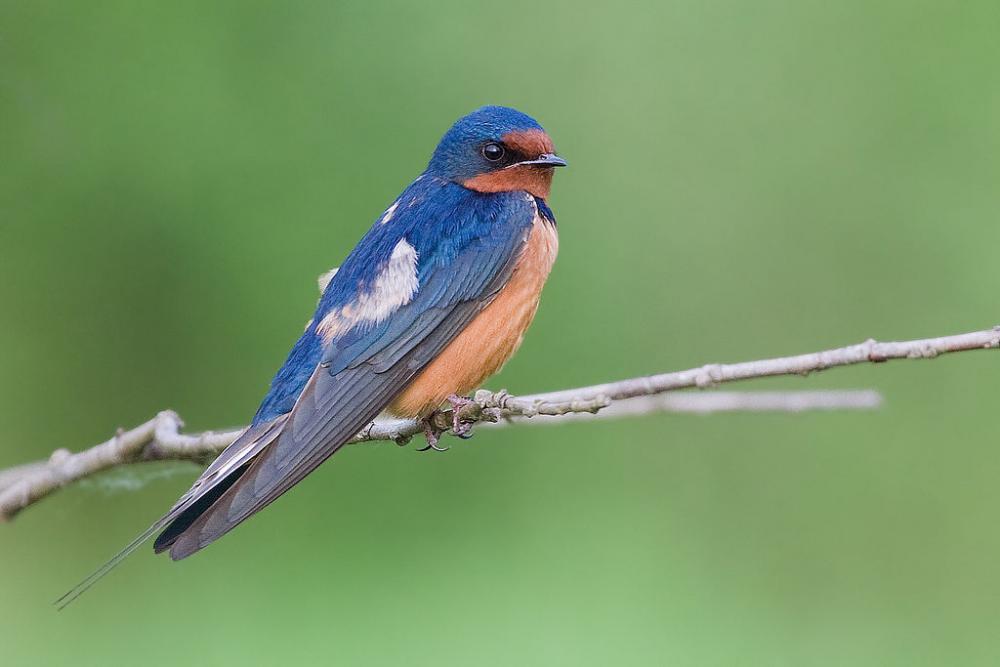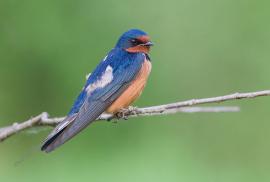Guide to Boreal Birds
Overview
The great majority of these birds now nest on or in buildings, but originally they used rocky ledges over streams and perhaps attached their nests to tree trunks in the shelter of branches (as do related species in Africa). Barn Swallows perform long migrations; some that breed in North America winter as far south as Argentina. Like other swallows, they migrate by day, often feeding as they travel. They are swift and graceful fliers, and it is estimated that they cover as much as 600 miles (1,000 kilometers) a day in quest of food for their young.
Description
5 3/4-7 3/4" (15-20 cm). Sparrow-sized. Our most familiar swallow, and the only one with a deeply forked tail. Upperparts dark steel-blue, underparts buff, throat and forehead rusty.
Voice
Constant liquid twittering and chattering.
Nesting
4-6 brown-spotted white eggs in a solid cup of mud reinforced with grass, lined with feathers and soft plant material, and placed on a rafter in a building or on a sheltered ledge.
Habitat
Agricultural land, suburban areas, marshes, lakeshores.
Range/Migration
The extensive winter range of this species -- from central Mexico to the southern tip of South America -- is somewhat misleading; the bulk of the North American population is believed to winter in the lowlands of eastern South America. Determining the actual whereabouts of any population of Barn Swallows in winter is complicated by several factors: These birds are extremely nomadic, they join huge roosting aggregations, and at any time in nearly any season of the year, one population or another is migrating. During spring migration thousands of these birds may aggregate near bodies of water, particularly during periods of inclement weather.
Breeds from Alaska east across Canada to Newfoundland and south through all of United States except southern Texas, Gulf Coast, and peninsular Florida. Winters in tropics. Also in Eurasia.



